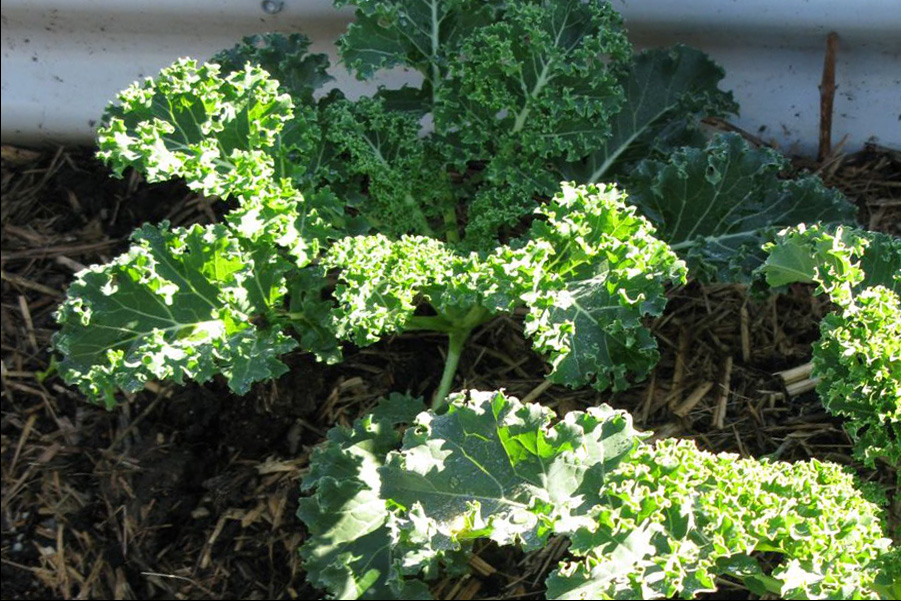Botanical name:
Brassica oleracea var. sabellica
Description:
Curly kale is a plant in the cabbage family that produces oblong shaped leaves instead of a head. The leaves are green or purple in colour, about 30 cm long and have a curly rim. Some kale varieties can grow more than a meter in height, the plants we grow don’t get bigger than 60 cm.
Kale originates in Europe where it was a staple food in the middle ages. It is a great source of vitamins K, A, C and E, trace elements and beneficial phytochemicals.
The flavour of kale gets much sweeter when the plant is experiences frost.
How to grow:
Sow 3 mm deep in well drained and lightly fertilised soil into a seed bed, and keep moist. Plants appear within 6 to 10 days. Transplant when 8 to 10 cm high into a bed with plenty of compost dug in. Choose a sunny or partly shady place, 40 cm apart and mulch between the plants. Plants need to be watered consistently.
Harvest in 7 to 9 weeks.
Growing in the neighbourhood:
Bush beans, beetroots, celery, onions, marigold, nasturtium, lettuce
Pests and other problems and how we deal with them:
Caterpillars of butterflies, especially the white cabbage butterfly are pests on curly kale. We keep them out by netting the bed with a 5-10 mm net as long as the plants are small. A bit of leaf loss on mature plants is tolerable, if caterpillars take away too much leaf material we spray the plants with a bacterial solution that controls them.
All members of the cabbage family can be affected by a single-celled organism deforming the roots and making it hard for the plants to take up water. The problem is called club root and requires serious soil treatment. We try to avoid this by strictly rotating crops.
Season:
Mid Autumn and Winter
Seed-saving:
Curly kale cross pollinates with other plants of the cabbage family. In order to collect useful seeds the mother-plant would need to be kept isolated.
How to harvest and use:
Harvest kale by picking off the outer leaves. The plant will keep on producing new leaves from it’s centre. Young leaves are tender, if they are older the centre vein is removed. Kale freezes very well, when blanched. Kale is nice in a stir fry with chili and garlic. Colcannon is and Irish dish of kale mashed with potatoes. Hearty kale dishes go very well with smoked sausages and meats. Kale can be dried in the oven to produce kale chips as a healthy snack. The leaves are added to green smoothies.
